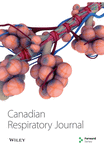Active and Uncontrolled Asthma Among Children Exposed to Air Stack Emissions of Sulphur Dioxide from Petroleum Refineries in Montreal, Quebec: A Cross-Sectional Study
Abstract
BACKGROUND: Little attention has been devoted to the effects on children’s respiratory health of exposure to sulphur dioxide (SO2) in ambient air from local industrial emissions. Most studies on the effects of SO2 have assessed its impact as part of the regional ambient air pollutant mix.
OBJECTIVE: To examine the association between exposure to stack emissions of SO2 from petroleum refineries located in Montreal’s (Quebec) east-end industrial complex and the prevalence of active asthma and poor asthma control among children living nearby.
METHODS: The present cross-sectional study used data from a respiratory health survey of Montreal children six months to 12 years of age conducted in 2006. Of 7964 eligible households that completed the survey, 842 children between six months and 12 years of age lived in an area impacted by refinery emissions. Ambient SO2 exposure levels were estimated using dispersion modelling. Log-binomial regression models were used to estimate crude and adjusted prevalence ratios (PRs) and 95% CIs for the association between yearly school and residential SO2 exposure estimates and asthma outcomes. Adjustments were made for child’s age, sex, parental history of atopy and tobacco smoke exposure at home.
RESULTS: The adjusted PR for the association between active asthma and SO2 levels was 1.14 (95% CI 0.94 to 1.39) per interquartile range increase in modelled annual SO2. The effect on poor asthma control was greater (PR=1.39 per interquartile range increase in modelled SO2 [95% CI 1.00 to 1.94]).
CONCLUSIONS: Results of the present study suggest a relationship between exposure to refinery stack emissions of SO2 and the prevalence of active and poor asthma control in children who live and attend school in proximity to refineries.




